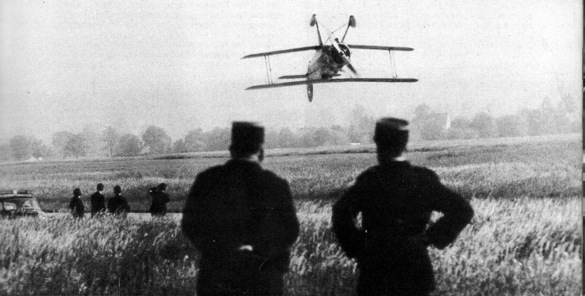
Francis lairdon performing at Basel in 1958
In the 1960s, he was much in demand for airshows all over Europe, and as far away as Dallas, TX. Three times in all he was a Lockheed Trophy finalist and in 1959 brought Switzerland her first resounding victory in a world-class event by winning the trophy itself, in a competition whose overall standard was rated much higher than in previous years.
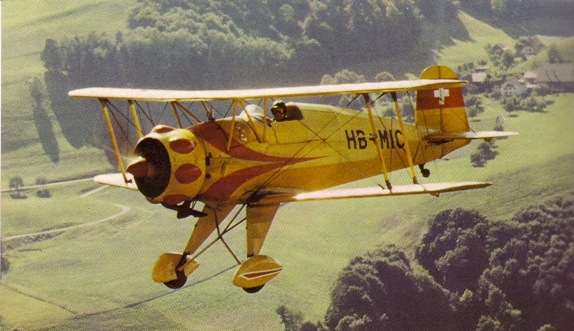
Lairdon's ex-military Jungmeister HB-MIC
Lairdon flew his Jungmeister through a beautiful series of figures, which he put together without disruptive pauses and with a fine sense of balance, contrasting the slower moments with the more abrupt and rapid maneuvers to achieve a cohesive whole.
Hot on the heels of Lairdon came Albert Ruesch, another Jungmeister exponent. Three times national champion and the foremost aerobat of the day, he too became a regular competitor at the Lockheed Trophy competition, joining Lairdon in 1960. Albert became well known in later years for his school in Porrentruy where he turned the charming and scenic airfield into a veritable Promised Land for devotees of aerobatics. Students came from all over Europe and from the United States to train with the master.
In 1963 and 1964, Albert's middle son Hansruedi joined his father at the Lockheed competitions.
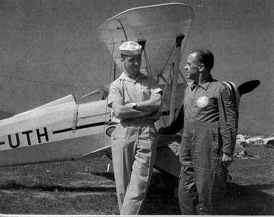
Hansruedi and Albert Ruesch
Dissatisfied with the performance of available machines, it was the Rueschs who first began an innovative trend in aerobatic aircraft which eventually had a profound influence on later events in Switzerland and Germany: by 1962 Albert had exchanged the once traditional Jungmeister for a verson of the Bu131 Jungmann, HB-UTH, which Flug und Fahrzeug Werke AG (successor to the manufacturers Dornier-Werke) had modified to operate on a 170HP Lycoming engine.
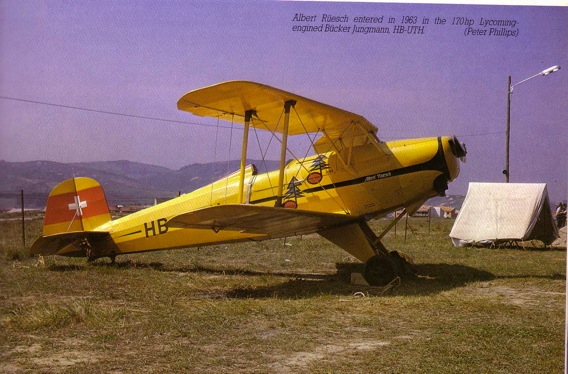
The Bucker R-170 HB-UTH
The "Super Jungmann", or Bucker R-170, greatly impressed observers in England on its first appearance and gave the venerable Jungmann a new lease on life. An even better modification was the substitution of a 180 HP engine together with a wing of improved section for inverted flght designed by Swiss engineer Fritz Dubs, and this version - fitted to the Pilatus modified Jungmann HB-URN - was the famous Lerche (Lark) marketed by Max Datwyler & CO. It made its debut at the 1966 World Championships, and continued its competition career as later as 1970.
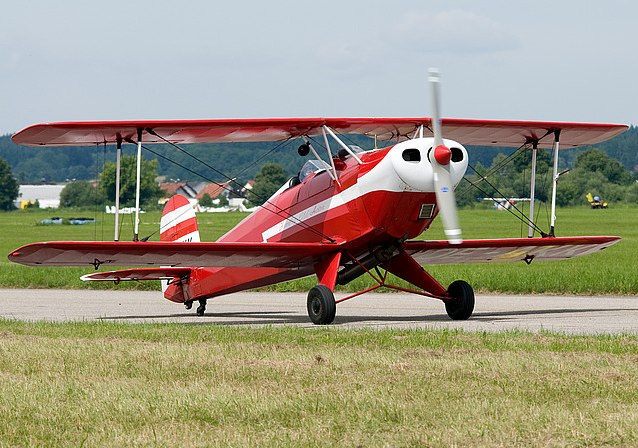
Bucker R-180 "Lerche"
(Mostly from "Flight Fantastic", Anette Carson, 1986)

